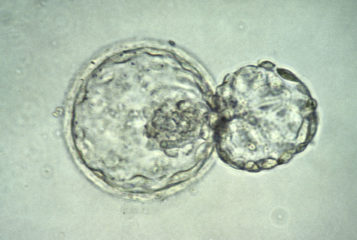Scar tissue formed after a heart attack could be repaired without the use of stem cells, according to US scientists.
Researchers found that molecules called micro RNAs improved the heart's ability to pump blood when injected into scar tissue cells of living mice.
After a heart attack cells called fibroblasts are drawn to damaged areas where they become scar tissue. Because fibroblasts do not contract like heart muscle cells (cardiomyocytes), the heart does not pump blood as efficiently and this can lead to heart failure.
MicroRNAs act like 'master switches', having the ability to control the activity of multiple genes. When the team delivered a combination of four microRNAs to fibroblasts in the lab, four percent of them became cardiomyocytes. This was increased to 30 percent by adding a drug called Jak Inhibitor I.
'This is the first study to use microRNA [...] to reprogramme fibroblasts into heart muscle cells', confirmed lead author Professor Victor Dzau of Duke Medical Center, USA.
The team confirmed this finding in living mice and now plans to do studies in larger animals. Dr Maria Mirotsou, a senior author on the study explained that using microRNAs 'may be more practical for direct delivery into cells and allow for possible development of therapies without [...] transplantation of stem cells'.
This would also avoid the ethical issues surrounding the use of stem cells.
Professor Dzau said this finding may have other therapeutic implications: 'If you can do this in the heart, you can do it in the brain, the kidneys, and other tissues. This is a whole new way of regenerating tissue'.
The study is published in Circulation Research.
Sources and References
-
Repairing the heart without using stem cells
-
Scar Tissue Becomes Heart Muscle in Mice
-
Treatment to help rebuild scar tissue in heart attack victims could be ready within next ten years
-
Scar Tissue Turned Into Heart Muscle Without Using Stem Cells
-
MicroRNA-Mediated In Vitro and In Vivo Direct Reprogramming of Cardiac Fibroblasts to Cardiomyocytes






Leave a Reply
You must be logged in to post a comment.